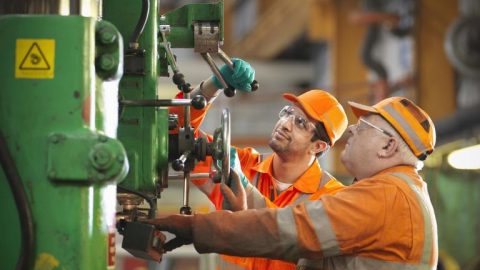
Illustration (Source: Internet)
Planned maintenance percentage PMP is a crucial maintenance metric calculating the amount of planned vs. unplanned maintenance at a facility. In other words, it tells you if you’re controlling maintenance or if maintenance is controlling you. Tracking, analyzing, and improving PMP leads to improved processes, less downtime, better schedules, and optimized resources.
Better maintenance planning is the first step in maximizing production at any facility. Planned maintenance leads to more uptime and eliminates the issues that cause delays and waste. Tracking and improving planned maintenance percentage is one way to ensure your maintenance team is doing everything is can to reduce instances of unplanned maintenance and contribute to a successful facility.
Before you calculate PMP, it’s important to understand the difference between planned and unplanned maintenance.
Planned maintenance anticipates work and creates a process for completing it, from start to finish. Unplanned maintenance is any maintenance that is not anticipated beforehand.
To calculate planned maintenance percentage, start by dividing the number of planned maintenance hours by the number of total maintenance hours in the same period. Multiply this number by 100 to find the final percentage.
PMP = Planned maintenance hours ÷ total maintenance hours x 100
For example, let’s say every maintenance task over the last month added up to 1,200 hours. Of all those hours, 980 of them were spent on planned tasks. That would mean that your PMP would be 81.7%
PMP = Planned maintenance hours ÷ total maintenance hours x 100
PMP = 980 ÷ 1,200 x 100 = 81.7%
Benchmarking PMP
World-class PMP is considered to be 85% or higher. However, it’s not enough to hit this number, pat yourself on the back, and call it a day. To truly understand if your organization is achieving best-in-class results, you must look at PMP alongside preventive maintenance compliance.
World-class PM compliance is 90%. If your facility isn’t hitting anything close to this target, there are some strategies for improving PM compliance, such as auditing for unnecessary PMs and using mobile maintenance to make PMs easier to complete.
How to improve PMP?
Make a plan for each asset
Before you can plan maintenance on an asset, you have to know which kind of maintenance it requires. There are four main planned maintenance strategies: Preventive, run to failure, condition-based, and predictive maintenance. Choosing the right strategy and the frequency of maintenance involves understanding how assets operate and how they impact your facility. There are many ways you can arrive at this understanding, including conducting a criticality analysis, determining failure modes, and using metrics, like MTBF.
Improve your response to emergencies
Emergencies happen, no matter how good you are at maintenance planning. However, time spent on unplanned maintenance cuts into time spent on planned maintenance. Giving your technicians easy access to high-quality repair resources helps them solve breakdowns faster so they can get back to planned tasks.
One way to improve your response to emergencies is to build a digital knowledge hub. This is a collection of essential and helpful information accessible in one place and in a digital format.
Establish and improve total productive maintenance
Total productive maintenance (TPM) puts processes and training in place so everyone in a facility—from operations to engineering—is contributing to maintenance. TPM empowers everyone to spot issues and take action to make sure they get addressed before they cause failure. This makes TPM critically important to increasing reliability at any facility.
Productivity and Quality Office